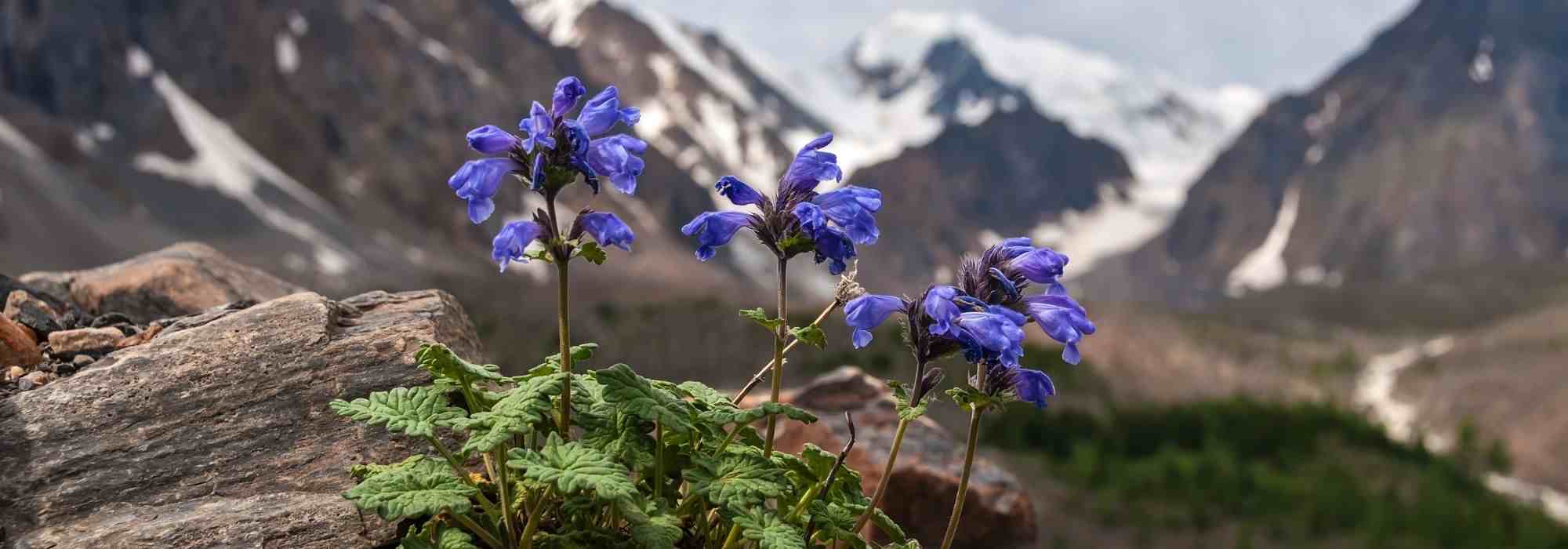
9 perennial plants to create an alpine rockery
Discover our selection!
Contents
While there are hundreds of varieties of perennial plants for rockeries, alpine plants prove particularly interesting: hardy, they require almost no maintenance, thrive in poor, well-drained, stony ground. Moreover, they are accustomed to withstanding extreme wind, heat, drought or frost.
These plants will bring a natural, wild touch to the garden, offering characteristics that have allowed them to adapt to their natural medium: small size, creeping habit, compact silhouette, …
Each perennial plant that grows in the mountains generally offers great diversity of colours and flowering, to suit all tastes.
Here is our selection of 9 mountain perennial plants to create your rockery.
Houseleeks, essential in rockeries
Houseleeks or sempervivums are small, highly decorative succulent plants, resembling little artichokes.
In summer, from June to August, they flower as graphic rosettes, displaying multiple shades of colour:
- Sempervivum ‘Chick Charms Berry Blues’ with pastel colours shifting from bluish-grey to mauve-purple as seasons progress ;
- Sempervivum ‘Chick Charms Gold Nugget’ and its extraordinary evolving colour, ranging from green to golden, before taking on red and orange hues in autumn ;
- ‘Commander Hay’ and ‘Silberkarneol’, with bicoloured pink and green rosettes ;
- Sempervivum calcareum and its green rosettes with red or brown tips, further enhancing the plant’s natural graphic effect ;
- ‘Dark Beauty’, a variety with an unusual dark colour.
In the Middle Ages, this plant was thought to protect against lightning, which is why it was often grown on roofs.
Houseleeks are extremely easy to grow : they require no maintenance, thrive in very little substrate and multiply spontaneously to colonise rockeries.
Even scarce rainwater suffices generally to meet water needs of this mountain perennial.
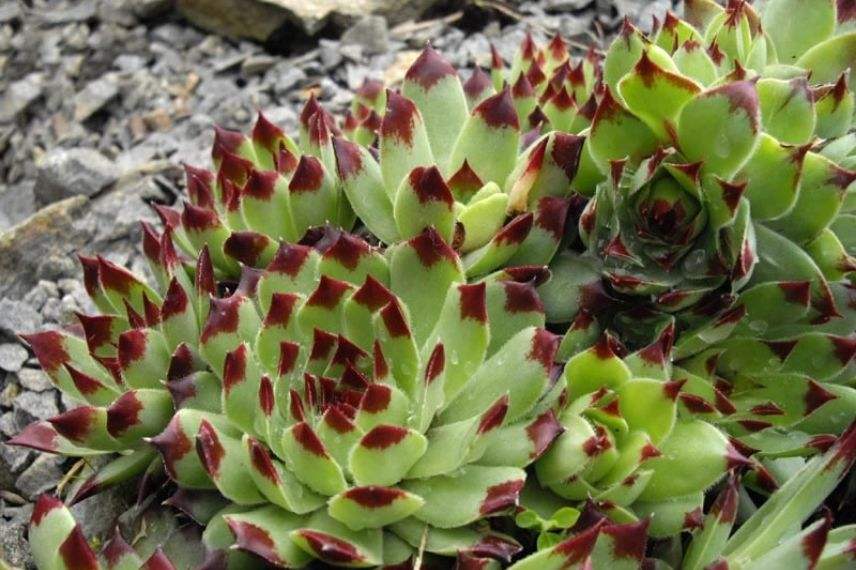
Sempervivum calcareum (Photo Wikipedia)
Read also
Alpine perennial plantsEdelweiss, symbol of the mountains
Alpine edelweiss (Leontopodium alpinum) is an iconic mountain plant.
It is recognisable by its small inflorescences of 3 cm star-shaped, covered with a wooly white coat reminiscent of snow. Leaves are also covered with a fine white felt.
Flowering occurs from early spring until July. Flowers, very decorative when dried, can be used to make pretty bouquets.
This small plant reaches 20 cm in height with a 10 cm spread.
Now rare, the « star of the snows », once used as a lucky charm, is now protected. Coming across an edelweiss in mountains still signifies good luck for hikers.
Easy to grow, Alpine edelweiss requires full sun and perfectly drained soil, which does not retain any standing water, especially in winter.
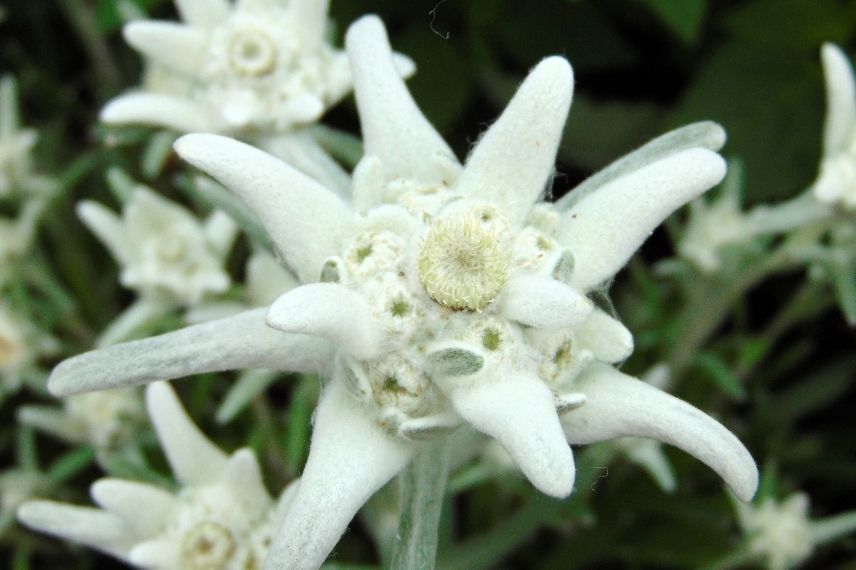
Leontopodium alpinum
Discover other Rockery perennials
View all →Available in 0 sizes
Available in 0 sizes
Available in 0 sizes
Available in 1 sizes
Available in 1 sizes
Available in 1 sizes
Available in 0 sizes
Available in 1 sizes
Available in 0 sizes
Available in 0 sizes
Saxifrages, pretty flowering cushions
Saxifrages, whose Latin name means “stone-breakers”, are perfect mountain perennial plants for rockeries.
Their light, starry, airy flowering ranges from white to yellow, from red to pink. It occurs in spring or summer.
- Saxifraga x arendsii ‘Pixie White’ offers a small moss cushion enlivened by a very vibrant deep-pink flowering.
- Saxifraga cotyledon ‘Southside Seedling’ produces charming white starry flowers, marked with red.
- Saxifraga arendsii ‘Peter Pan’ is adorned with small red flowers with yellow centre, set off by cushion-like mossy foliage.
- Saxifraga umbrosa ‘Variegata’ sports bicolour green-and-yellow foliage, topped by a cloud of white flowers with red centre.
Foliage is equally decorative: cut leaves, rosette-forming foliage, fine mossy-looking leaves, variegated foliage, …
Plant forms pretty mat-forming cushions, ideal for dressing a rockery.
Saxifrages require no special maintenance: these perennials will settle into well-drained soil, even poor or with little substrate. They tolerate sunny or semi-shaded positions, protecting them from scorching midday sun.
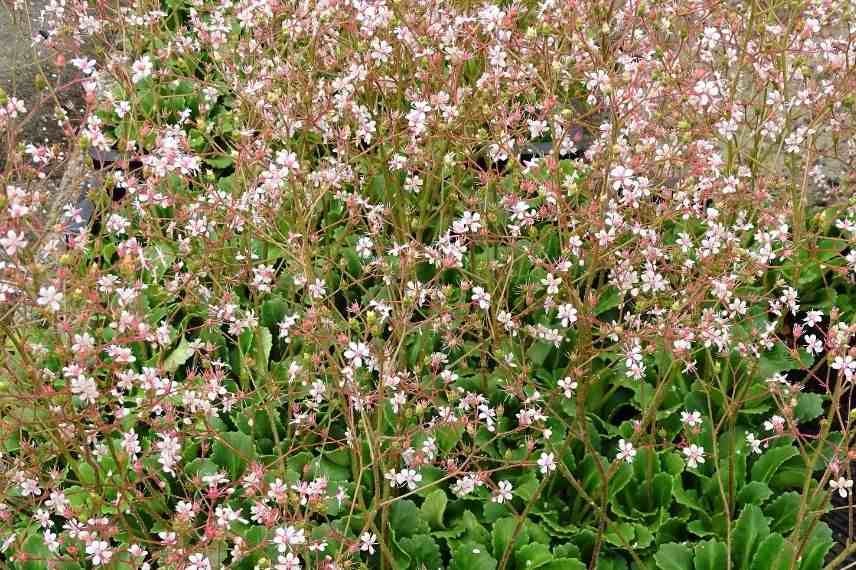
Saxifraga umbrosa
Read also
15 plants for a sunny rockeryGentian, a magnificent blue accent in the rockery
Gentians are perennials native to mountains, comprising many varieties, some of which thrive particularly in rockery.
This is the case with with stemless gentian or Alpine gentian, which in late spring produces 5 cm trumpet-shaped flowers, a magnificent deep blue touched with green in its centre.
It measures 20 cm across and 10 cm high. Its basal rosette foliage gives it a tapetum habit.
Pour To successfully plant gentian, choose a sunny or partly shaded position. A little more demanding than other alpine plants, it requires rich, well-drained soil to avoid any waterlogging, while remaining cool and moist.
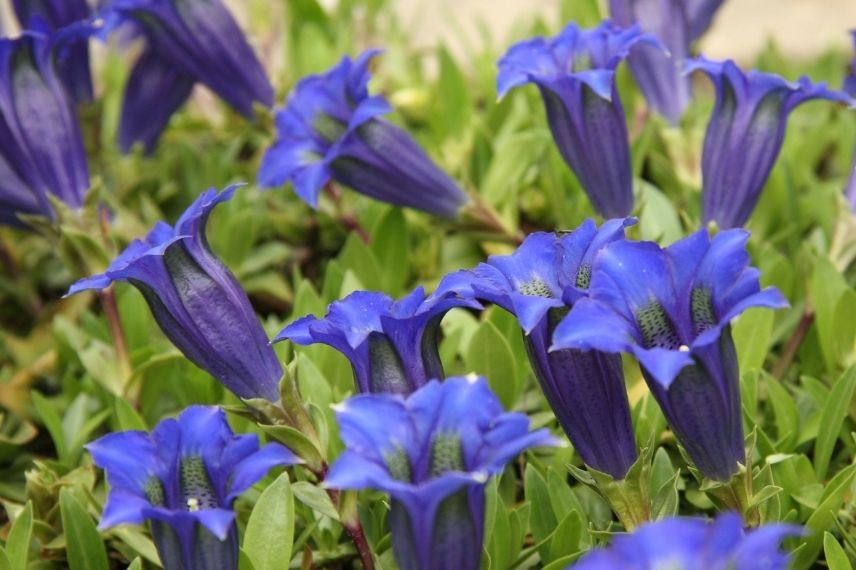
Gentiana acaulis (Photo Maja Dumat)
Aubrietas, colourful tapeta
Aubrietas are alpine perennial plants in the cabbage family (Brassicaceae), reaching 10 to 15 cm in height.
From March to June, these very floriferous plants are adorned with flowers 1 to 3 cm across, revealing 4 petals and colours varying according to variety :
- Aubrieta ‘Royal Blue’ displays a lovely mauve-blue;
- ‘Red Carpet’ offers a vivid bright pink;
- ‘Kitte White’ bears pure white flowers, highlighted by a yellow centre;
- ‘Bressingham Red’ blooms in carmine-red tones;
- ‘Dr Mules Variegated’ produces mauve flowers, set off by green foliage with white margins.
This groundcover with evergreen or variegated green foliage is ideal in rockeries and can even climb low walls. It spreads quickly to dress areas and can tend to smother neighbours if not given enough space.
Growing aubrietas is possible throughout France, provided situation is sunny enough to encourage plant development. This perennial appreciates light, well-drained soils that do not dry out too much in summer.
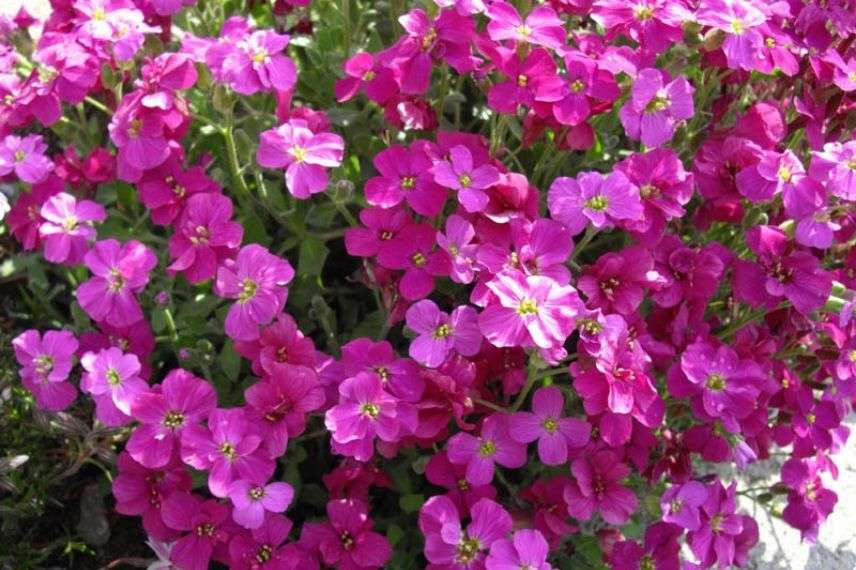
Aubrieta ‘Bressingham Red’ (Photo Wikipedia)
Pulsatilla, luminous little bells
Pulsatilla or pasqueflower is a perennial herbaceous plant native to alpine regions, reaching about 15 to 30 cm in height.
With early spring flowering (March to May), it offers dazzling, delicate, colourful bells that bring a true wild mountain atmosphere to the garden.
Stems are clothed in a delicate silvery down that contrasts with colours of the flowers.
Finely divided foliage appears after flowering. Aesthetic appeal of the plant is further enhanced by production of surprising feathery fruits at end of season.
- Pulsatilla vulgaris ‘Rubra (Röde Klokke)’ brings a real touch of vitality to rockeries, thanks to its intense red lit by yellow stamens, followed by fruiting into small downy seeds.
- Star-shaped bells of ‘Violet’ are, as name suggests, a magnificent violet hue, brightened by stamens in sunlit tones. Plant produces airy pom-pom fruiting, as if made of fine feathers.
- Long silvery downy stems of ‘Alba’ reveal immaculate white flowers with a sunny yellow centre. This pulsatilla develops white-silvery plumes at fruiting time.
Very hardy down to -20 or -30°C, pulsatillas prefer cold winters and dry summers. They grow in calcareous, well-drained and deep soil, allowing their taproot to develop properly.
Sun encourages flowers to open, which close in case of rain.
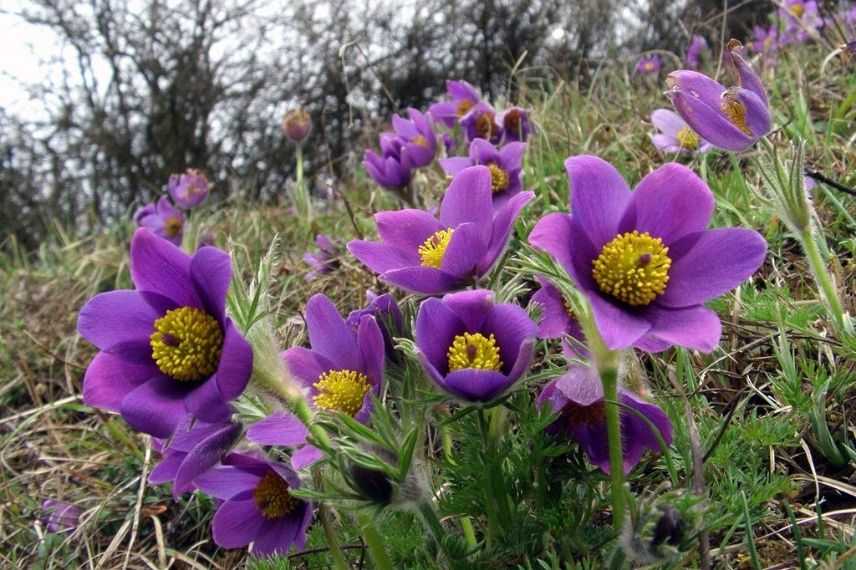
Pulsatilla vulgaris ‘Violet’ (Photo Orchi)
Carline thistles or wild artichokes
Carline is a small species of thistle found in European mountains on dry slopes.
It flowers from spring through summer, revealing large, very striking heads in shades of white, orange or yellow, adorned with numerous bracts.
Flowers retain all their aesthetic qualities when dried and show themselves to be perfect candidates for dried bouquets.
Flowering gives way to villous achenes, which allow the plant to self-seed.
Long leaves arranged in a rosette have deeply lobed edges covered with thorns.
Plant carlines in full sun to make the most of their flowers, which close in rain and high humidity, earning them the nickname “Shepherd’s Barometer”.
This mountain perennial is grown in poor, dry, well-drained rocky soil, to avoid rot of the taproot. Plant requires almost no maintenance.
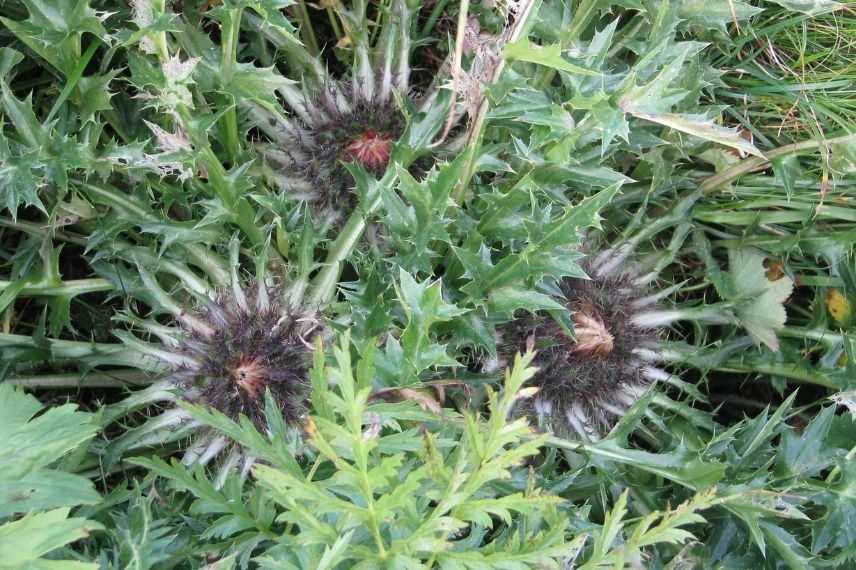
Carlina acaulis ssp simplex ‘Bronze’ (Photo Peganum)
Alyssums, the golden touch
Alyssum (Allysum) or basket of gold comprises several species, the most common of which are perennials native to mountainous, rocky regions.
Plant forms from early spring through to summer a magnificent sparkling ground-cover cushion, yellow or, more rarely, white.
- Alyssum saxatile ‘Goldkugel’ forms true evergreen tufts that in spring and for about a month are covered with a multitude of dazzling golden-yellow flowers.
- Alyssum montanum ‘Berggold’ or “mountain alyssum” offers a compact habit that lights up at flowering with a sunny yellow and exudes a delicate honey scent.
Summer then brings small round green fruits, allowing plant to self-seed.
Sun-loving, alyssum grows in even poor, infertile, stony or sandy soils.
It requires no special care, apart from occasional watering during periods of severe summer drought or when rain is lacking.
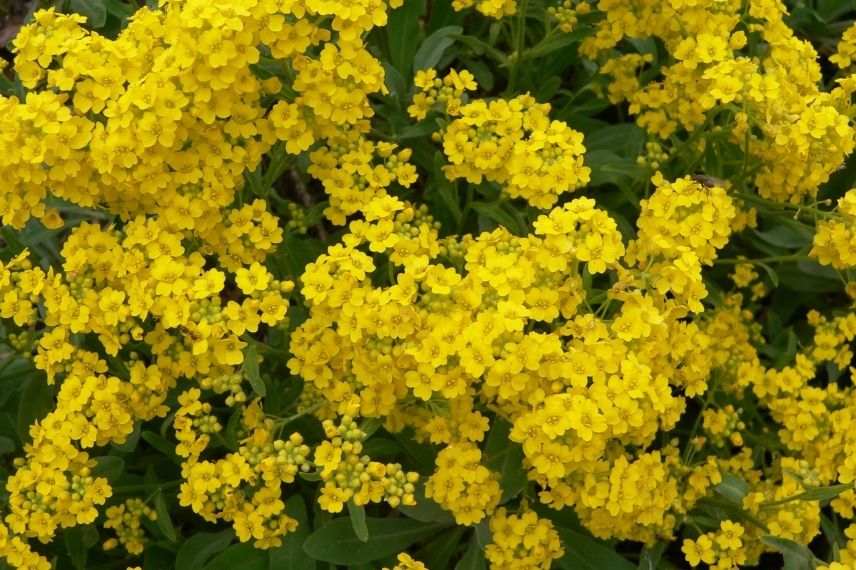
Alyssum saxatile ‘Goldkugel’ (Photo Wikipedia)
Lewisia cotyledon, a true bouquet of vibrant flowers
Lewisia cotyledon or Siskiyou lewisia are perennial plants native to the Rocky Mountains of North America.
Their compact size (25 cm tall and wide) and their ramified tap roots allow them to thrive in crevices or scree.
From spring to mid-summer, they reward with a profusion of flowers in bright, vivid colours, blending shades of pink, red, orange or salmon.
Flowers 3 cm in diameter form star-shaped corollas, with 7 to 12 petals, which close at nightfall.
Evergreen, tongue-shaped foliage turns from green to red in cold weather.
Very hardy, lewisia is only troubled by winter damp. It grows in very free-draining soil, rich in organic matter, in full sun or partial shade in warm regions.
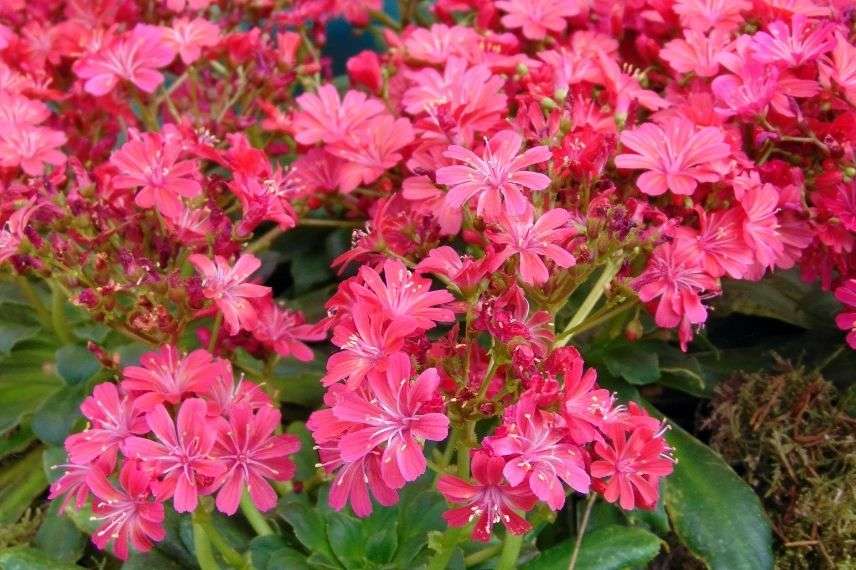
Lewisia cotyledon ‘Elise Ruby Red’ (Photo Floragran)
- Subscribe!
- Contents
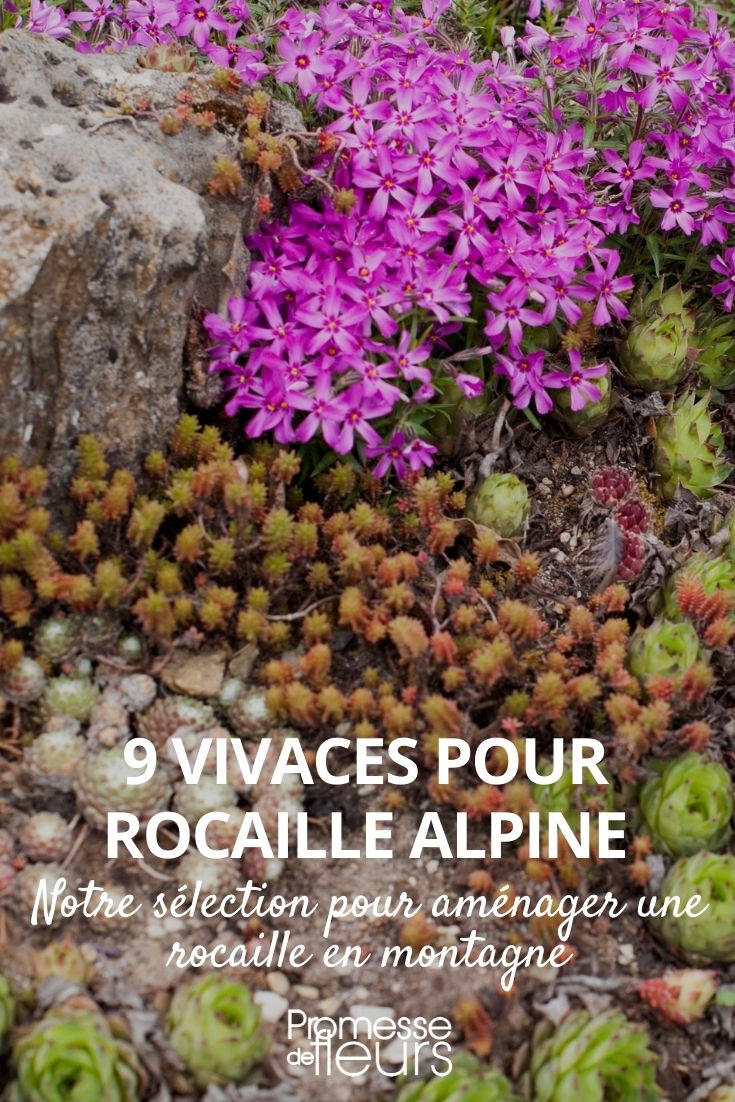
































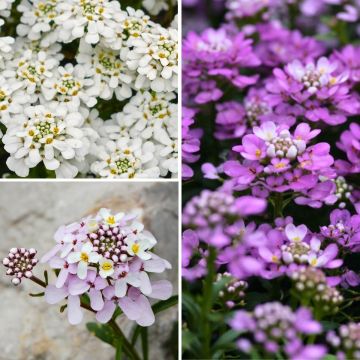
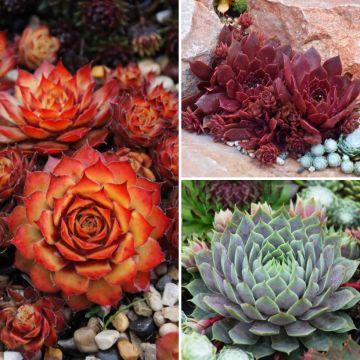
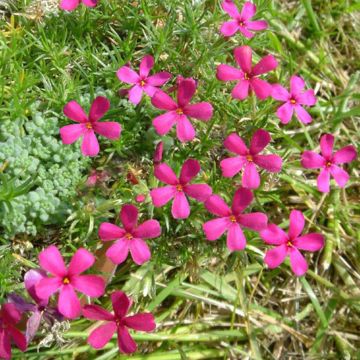

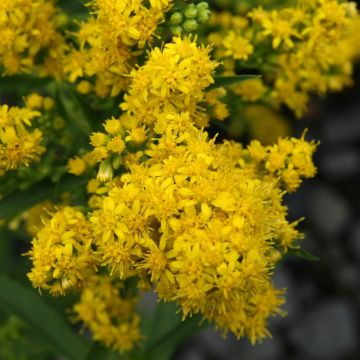
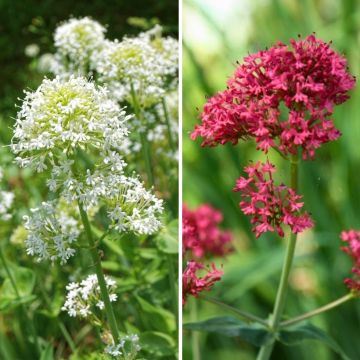
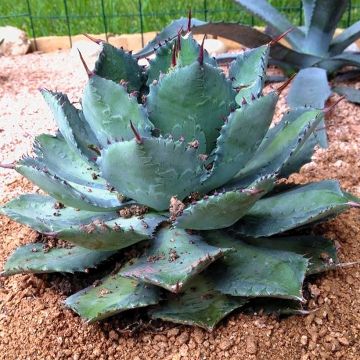
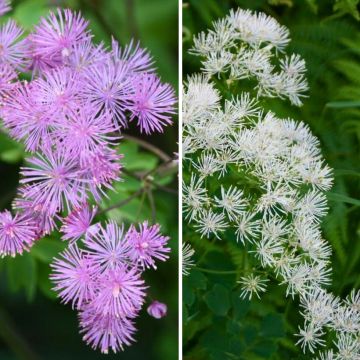
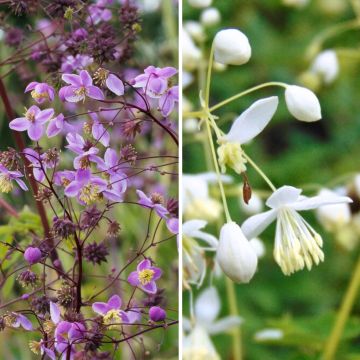
Comments